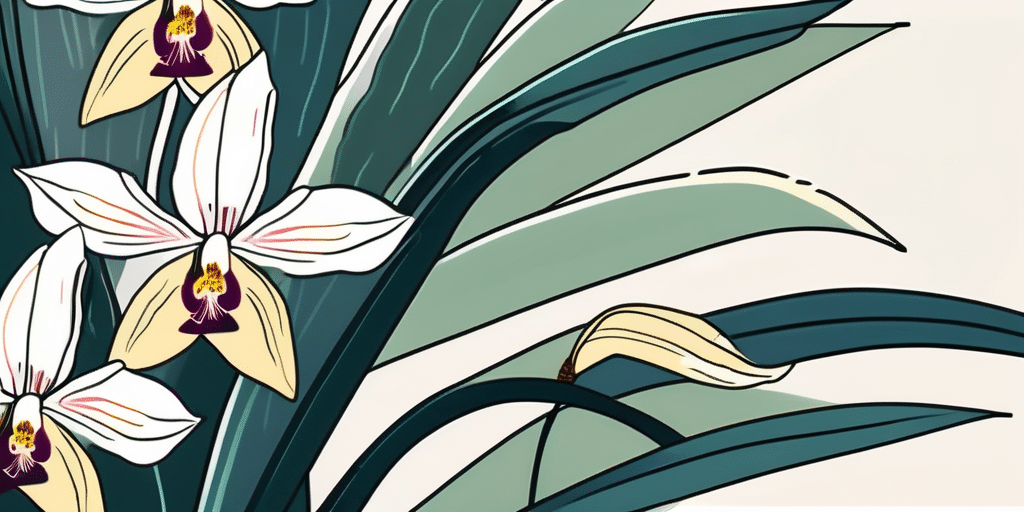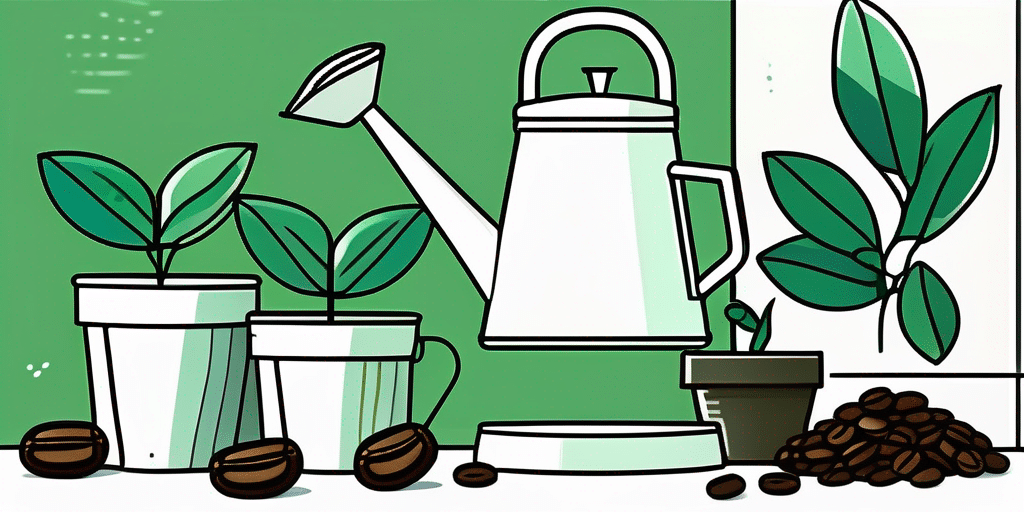Welcome to the ultimate guide to growing hops! Whether you’re a beer enthusiast or a gardening aficionado, understanding how to cultivate hops can be a rewarding and fascinating endeavor. In this comprehensive article, we will explore the basics of hops, the ideal conditions for their growth, choosing the right hops variety, the process of planting, and caring for your hops plants.
Understanding the Basics of Hops
Hops are an essential ingredient in the brewing process and are responsible for the unique bitterness and aroma in beer. But what exactly are hops?
What are Hops?
Hops are the flowers of the Humulus lupulus plant, a climbing perennial vine native to North America, Europe, and Asia. They contain various compounds, including alpha acids, essential oils, and polyphenols, which contribute to the brewing process.
The Importance of Hops in Brewing
While hops add flavor, aroma, and stability to beer, they also play a vital role in the brewing process. Hops provide bitterness that balances the sweetness of malt, act as a natural preservative, help clarify beer, enhance foam stability, and contribute to beer’s aroma profile.
Alpha acids are one of the key components found in hops that are responsible for the bitter taste in beer. These acids are isomerized during the boiling process of brewing, which releases the bitterness and acts as a counterbalance to the sweetness of the malt. The level of alpha acids in hops can vary depending on the hop variety and growing conditions, allowing brewers to create a wide range of bitterness levels in their beers.
Types of Hops
There are numerous varieties of hops grown around the world, each with its unique flavor and aroma characteristics. Some popular hop varieties include Cascade, Citra, Simcoe, and Amarillo. Cascade hops, for example, are known for their floral and citrusy notes, while Citra hops impart tropical fruit and citrus aromas to beer. Brewers often experiment with different hop combinations to create complex and innovative flavor profiles in their brews.
The Ideal Conditions for Growing Hops
Before embarking on your hop-growing journey, it’s crucial to create an environment that is conducive to their growth. Hops, the essential ingredient in brewing beer, are vigorous climbers that require specific conditions to flourish.
When selecting a location for your hop garden, consider the climate and weather requirements, as well as the soil preferences of these bine plants. Understanding these factors will help you establish a thriving hop yard that yields abundant cones for your brewing endeavors.
Climate and Weather Requirements
Hops thrive in regions with a temperate climate, as they require a distinct winter dormancy period. Ideally, they prefer daytime temperatures between 60°F (15°C) and 75°F (24°C), with cool nights and ample sunlight. These perennial plants are sensitive to frost, so it’s essential to choose a location that offers protection from late spring frosts that can damage emerging shoots.
Soil Preferences for Hops
Hops are adaptable plants but prefer well-draining soil with a pH range of 6.0 to 7.5. Sandy loam soils enriched with organic matter are ideal for providing the necessary drainage and nutrient availability. The soil should also be rich in potassium and nitrogen, essential nutrients for healthy hop growth and cone development.
Before planting your hop rhizomes or crowns, consider conducting a soil test to assess the nutrient levels and pH of your chosen site. Amending the soil with compost, aged manure, or organic fertilizers can help create an optimal growing environment for your hop plants. Additionally, incorporating a trellis system for the hops to climb will support their vertical growth and facilitate easy harvesting when the cones are ready for picking.
Choosing the Right Hops Variety
With hundreds of hop varieties available, selecting the right one for your brewing preferences can be overwhelming. Understanding the different characteristics can help narrow down your choices.
When it comes to choosing the perfect hops variety for your brew, it’s essential to consider not only the flavor profile but also the alpha acid content, aroma intensity, and oil composition. These factors can greatly influence the final taste and aroma of your beer, so it’s crucial to select hops that align with your desired outcome.
Popular Hops Varieties
From floral and fruity aromas to earthy and herbal notes, hops come in a wide range of flavors and aromas. Some popular hop varieties include:
- Cascade
- Centennial
- Citra
- Simcoe
Each hop variety brings its unique characteristics to the brewing process. Cascade hops, for instance, are known for their floral and citrusy notes, making them a favorite for American pale ales and IPAs. On the other hand, Centennial hops offer a balanced bitterness and a pleasant floral aroma, ideal for a wide range of beer styles.
Selecting Hops Based on Beer Style
To enhance specific beer styles, certain hop varieties are better suited. For example:
- Citra hops are known for their tropical fruit flavors, making them perfect for IPAs and pale ales.
- Fuggle hops have an earthy and delicate floral aroma, making them suitable for traditional English ales.
Simcoe hops, with their unique blend of pine, earth, and citrus characteristics, are often used in West Coast IPAs to impart a bold and complex flavor profile. Understanding how different hops interact with various beer styles can elevate your brewing game and help you craft beers that stand out in both taste and aroma.
The Process of Planting Hops
Now that you’ve chosen your hops variety, it’s time to get your hands dirty and start the planting process. Planting hops is not only a rewarding experience but also a crucial step in the journey towards brewing your own beer.
Before you dive into the planting process, it’s essential to understand the significance of hops in beer production. Hops not only add bitterness and aroma to beer but also act as a natural preservative, prolonging its shelf life. By planting your own hops, you have the opportunity to customize the flavor profile of your brews and truly make them your own.
When to Plant Hops
The best time to plant hops is in the early spring, once the soil has thawed and the threat of frost has passed. This timing allows the plants to establish their root system before the heat of summer. A well-established root system is crucial for the overall health and productivity of your hop plants.
How to Plant Hops
- Prepare the soil by removing any weeds or debris and amending it with compost or well-rotted manure. Hops thrive in well-draining soil with a pH level between 6.0 and 8.0.
- Set up a trellis system or sturdy support structure for the hops to climb. Hops are vigorous climbers and can grow up to 25 feet tall in a single season, so providing adequate support is essential.
- Plant the hop rhizomes or young plants in mounds, spacing them around 3 to 5 feet apart. Ensure that the buds are facing upwards and are placed just below the soil surface.
- Water thoroughly after planting and ensure they receive adequate moisture throughout their growth. Hops require consistent watering, especially during hot summer months, to support their rapid growth and development.
As your hop plants grow, you will witness the beauty of their lush green foliage and the emergence of cone-like flowers, which are the prized ingredient in brewing. With proper care and attention, your hop plants will flourish and provide you with a bountiful harvest for years to come.
Caring for Your Hops Plants
Once your hops plants are in the ground, proper care is instrumental in ensuring healthy growth and a bountiful harvest. Hops, known botanically as Humulus lupulus, are perennial plants that are prized for their cone-like flowers, which are used in brewing to add bitterness, flavor, and aroma to beer.
When selecting a location for your hops plants, it’s essential to choose a spot with ample sunlight, good air circulation, and well-draining soil. Hops thrive in full sun, requiring a minimum of 6 to 8 hours of direct sunlight per day. The soil should be loose and well-draining to prevent waterlogging, which can lead to root rot.
Watering and Feeding Hops
Adequate watering is crucial during the growing season, especially during dry periods. It’s recommended to water hops deeply once a week, allowing the soil to dry between waterings. Additionally, applying a balanced fertilizer can provide essential nutrients to support vigorous growth. Hops are heavy feeders, particularly during their peak growing months from spring to early summer.
Consider using a slow-release fertilizer or a liquid fertilizer every few weeks to ensure your hops plants have access to the nutrients they need. Avoid over-fertilizing, as this can lead to excessive vegetative growth at the expense of cone production.
Pruning and Training Hops
As hops are vines, they require support and regular pruning for optimal growth. Throughout the growing season, train the bines to climb the trellis or support structure. Pruning involves removing excessive side shoots and leaves to improve airflow, prevent diseases, and focus the plant’s energy on producing hops cone. Proper pruning also helps manage the overall size of the plant and prevents it from becoming too dense, which can hinder air circulation.
During the first year of growth, it’s essential to establish a strong root system and encourage healthy bine development. This sets the foundation for future growth and a successful harvest in subsequent years. By understanding the basics of hops, providing ideal growing conditions, selecting the right hops variety, and properly caring for your hops plants, you’ll be well on your way to enjoying your very own homegrown hops. So start planting, tending, and soon you’ll be sipping on a beer that features your own fresh, aromatic hops!
Join Our Gardening Community
Ready to take your hop-growing and gardening skills to the next level? Subscribe for free to How to Grow Everything and learn how to build the garden of your dreams! Receive personalized gardening advice tailored to your location, grow zone, and experience level. Enjoy the best gardening tips, special offers, and deals delivered straight to your inbox—100% free, with no spam or tricks. From our family to yours, let’s cultivate a greener world together. Start your journey with us today!


